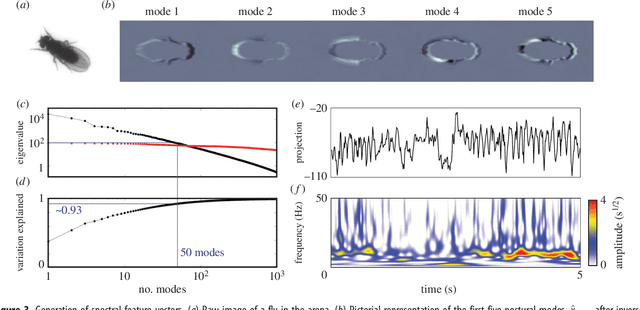Daniel M. Choi
Mapping the stereotyped behaviour of freely-moving fruit flies
Aug 12, 2014



Abstract:Most animals possess the ability to actuate a vast diversity of movements, ostensibly constrained only by morphology and physics. In practice, however, a frequent assumption in behavioral science is that most of an animal's activities can be described in terms of a small set of stereotyped motifs. Here we introduce a method for mapping the behavioral space of organisms, relying only upon the underlying structure of postural movement data to organize and classify behaviors. We find that six different drosophilid species each perform a mix of non-stereotyped actions and over one hundred hierarchically-organized, stereotyped behaviors. Moreover, we use this approach to compare these species' behavioral spaces, systematically identifying subtle behavioral differences between closely-related species.
 Add to Chrome
Add to Chrome Add to Firefox
Add to Firefox Add to Edge
Add to Edge